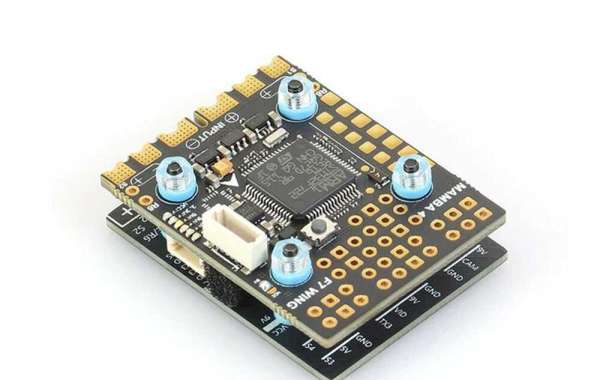In the world of semiconductor manufacturing, probe cards play a crucial role in ensuring the quality and reliability of integrated circuits (ICs). These small yet powerful devices enable the testing of thousands or even millions of microchips on a wafer, allowing manufacturers to identify defects and ensure optimal performance. Behind the scenes, probe cards and manufacturers work tirelessly to develop cutting-edge solutions that meet the ever-increasing demands of the industry. we delve into the realm of Probe Card Manufacturers, exploring their innovations and contributions to the semiconductor testing landscape.
Evolution of Probe Cards:
- The Birth of Probe Cards
Probe cards have come a long way since their inception. The earliest probe cards were simple, featuring a needle-like structure used to make contact with individual pins on a device under test (DUT). These rudimentary probe cards had limited functionality and were suitable only for basic testing purposes. However, as technology advanced, the need for more sophisticated and versatile probe cards became apparent.
- Transition to Advanced Probe Cards
The evolution of probe cards witnessed a significant breakthrough with the introduction of advanced technologies such as MEMS (Micro-Electro-Mechanical Systems) and cantilever-based probes. MEMS-based probe cards revolutionized the industry by providing high-density probing capabilities, enabling simultaneous testing of multiple ICs. Cantilever-based probes, on the other hand, offered enhanced durability and flexibility, making them ideal for probing delicate chips with intricate designs.
- Current State-of-the-Art Probe Cards
Today, probe cards have reached unprecedented levels of sophistication. They are meticulously engineered to accommodate the complex architecture of modern ICs, including multi-layered structures and delicate circuitry. Furthermore, probe cards now feature advanced technologies like vertical probes, which enable fine-pitch probing and reduce signal interference. The industry has also seen the emergence of advanced probe card architectures such as MEMS-CMOS hybrid probe cards, combining the best of both worlds to deliver superior performance.
Innovations in Probe Card Manufacturing:
- Materials and Manufacturing Techniques
The choice of materials and manufacturing techniques plays a vital role in the performance and reliability of probe cards. In recent years, manufacturers have been exploring innovative materials such as graphene, carbon nanotubes, and advanced polymers to enhance probe card functionality. These materials offer improved electrical conductivity, mechanical strength, and resistance to wear, resulting in more efficient and durable probe cards.
Furthermore, advanced manufacturing techniques like 3D printing and laser micromachining have revolutionized the production of probe cards. 3D printing enables the creation of intricate probe structures with high precision, allowing for greater design flexibility. Laser micromachining, on the other hand, provides the capability to fabricate complex patterns and geometries on probe cards, enabling customized solutions for specific testing requirements.
- Probing Solutions for Emerging Technologies
With the rapid growth of emerging technologies such as the Internet of Things (IoT), artificial intelligence (AI), and 5G, Probe Card Manufacturers have been at the forefront of developing probing solutions to meet the unique challenges posed by these advancements. These technologies often involve miniaturized and highly integrated ICs, necessitating probe cards with smaller form factors, higher contact densities, and improved signal integrity.
To address these demands, probe card manufacturers have developed innovative solutions such as vertical and MEMS-based probes, as mentioned earlier. These technologies enable high-density probing without compromising signal quality. Additionally, manufacturers have introduced specialized probe cards for specific applications, such as radio frequency (RF) probe cards for testing wireless communication ICs and high-power probe cards for evaluating power devices.
Challenges and Future Outlook:
- Challenges in Probe Card Manufacturing
Despite the remarkable progress in probe card manufacturing, several challenges persist in the industry. One of the significant challenges is the escalating complexity of IC designs. As semiconductor technology continues to advance, ICs become increasingly intricate, with densely packed circuitry and multiple layers. Probe card manufacturers must keep pace with these advancements to ensure accurate and reliable testing.
Another challenge is the need for faster testing speeds. As the demand for ICs grows, manufacturers strive to increase production throughput without compromising on quality. This puts pressure on probe card manufacturers to develop solutions that can handle higher data rates and achieve faster test times.
- Future Trends and Directions
Looking ahead, probe card manufacturers are exploring various avenues to overcome existing challenges and meet future demands. One promising direction is the integration of artificial intelligence and machine learning into probe card design and testing processes. These technologies can optimize probe card layouts, enhance fault detection algorithms, and improve overall test efficiency.
Furthermore, the advent of advanced packaging technologies such as system-in-package (SiP) and wafer-level packaging (WLP) presents new opportunities for probe card manufacturers. These packaging techniques require novel probing solutions to address the unique challenges associated with testing packaged ICs.
Moreover, environmental sustainability has become a key concern across industries, and the semiconductor industry is no exception. Probe card manufacturers are actively researching eco-friendly materials and manufacturing techniques to reduce their carbon footprint and contribute to a greener future.
Conclusion:
Probe card manufacturers play a pivotal role in the semiconductor testing ecosystem, driving innovation and enabling the production of high-quality ICs. The evolution of Probe Cards from basic needle-like structures to advanced MEMS and cantilever-based probes showcases the industry's commitment to meeting the ever-growing demands of semiconductor technology.
Through advancements in materials, manufacturing techniques, and probing solutions, probe card manufacturers are continually pushing the boundaries of what is possible. As emerging technologies continue to evolve, probe card manufacturers will remain at the forefront, addressing new challenges and shaping the future of semiconductor testing.










